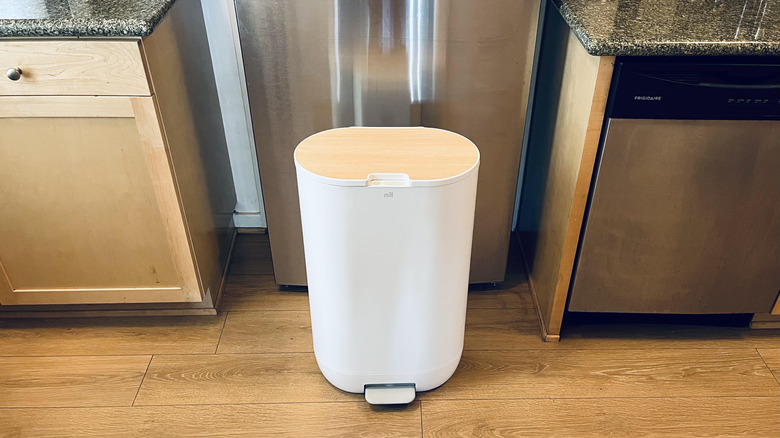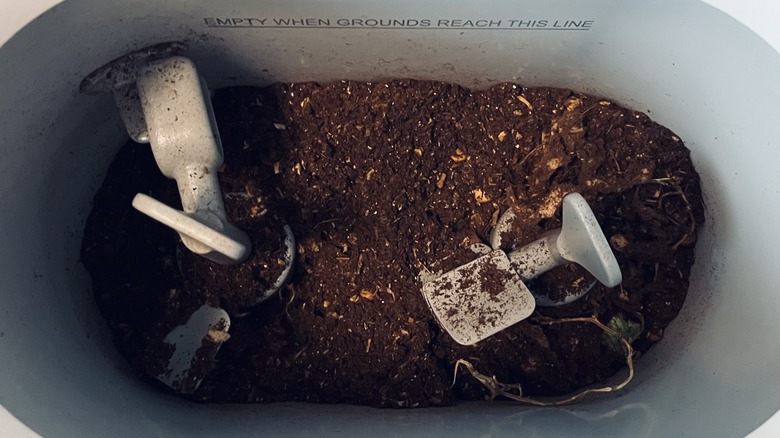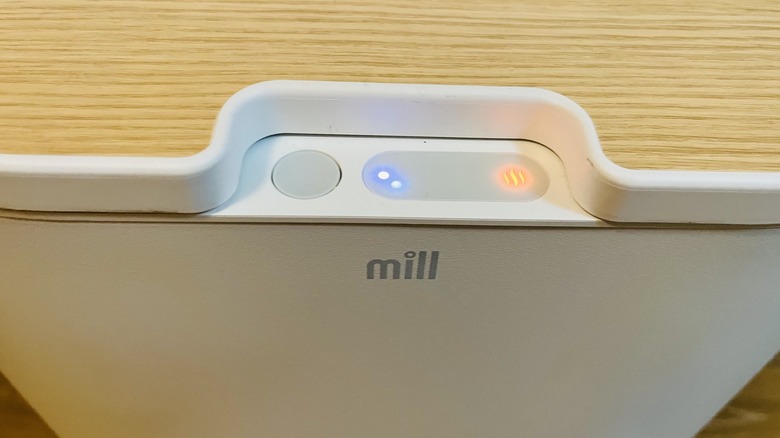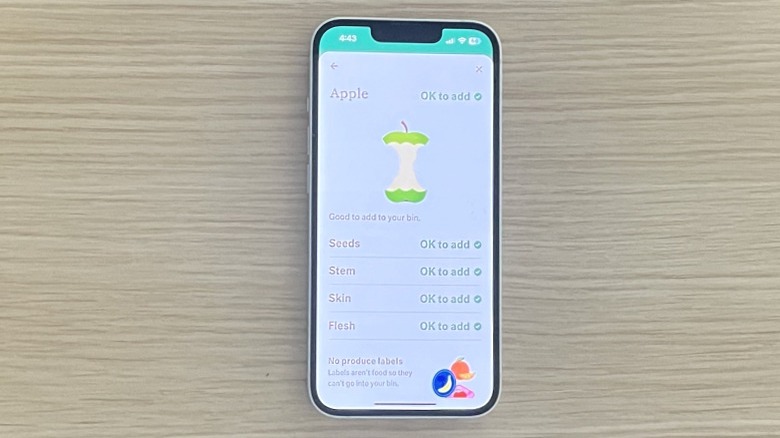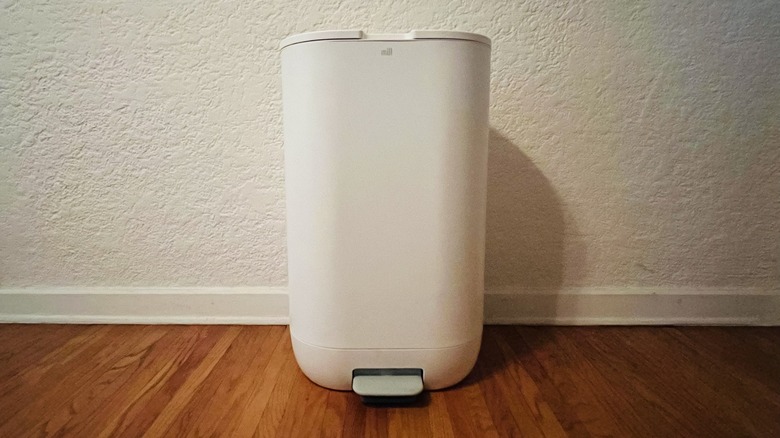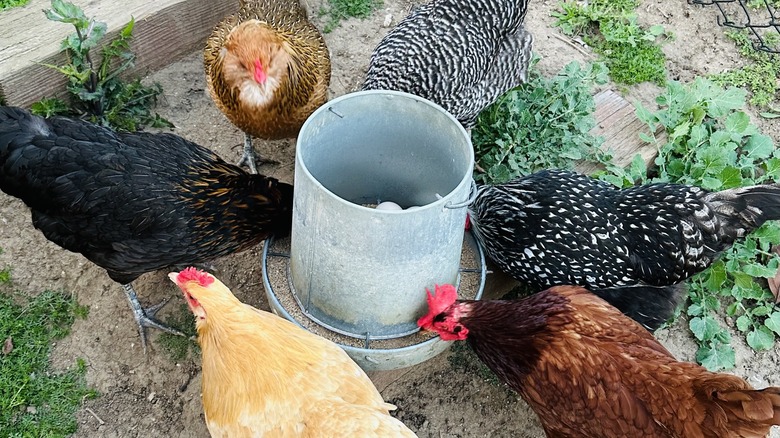Review: The Mill Food Recycler Will Shrink Your Trash (And Your Bank Account)
Kitchen space can be oh so precious, yet there always seems to be a new gadget or gizmo that comes along to vie for that valuable real estate. But for every new device that earns a spot in heavy rotation like an Instant Pot and air fryer, there's the all too common purchase that had so much promise, but after a few lackluster uses, ends up being pawned off to family and friends or simply tossed away to make room for something better.
And then there's the Mill food recycler, courtesy of the brains behind the nifty Nest smart thermostat, that is in and of itself a waste disposal system. Though it resembles a standard garbage bin, albeit a snazzy looking one with a sleek white base and faux maple lid, there's plenty more happening than meets the eye. With promises of trash shrinkage, odor elimination, and eco-improvement, I decided to take the Mill (the recently released version 2.0, to be exact) for a few spins and investigate if it's worth its hefty price tag.
This review is based on firsthand impressions of promotional materials and products provided by the manufacturer.
So, what's under the lid?
Food recyclers are a small yet growing space with startups like Lomi and bigger brands such as Vitamix getting in on the action. While most options are compact and can fit on your countertop, the folks at Mill decided to think big and offer 6.5 liters of capacity so you're not constantly dumping your grounds. (per the company, it can handle 40 pounds of wet scraps after the machine works its magic.)
While it may be a garbage bin doppelgänger, you'll find that the similarities are merely skin deep when you attempt to move the device, all 68 pounds of it. The powder-coated steel bin houses a dual grinding system and aluminum bucket complete with a heating mechanism that can transform bulky waste into a tidy pile of food grounds. Though the material may seem like compost, it's still technically food, so don't go spreading it 'round unless you want to attract mold and uninvited critters into your garden. You can, however, take the extra step of converting it to compost, or arrange for Mill to pick it up and transform it into chicken feed.
Cost and availability
If food recyclers haven't been on your radar, that could be due to their eye-popping price tags. Countertop models will run you a few hundreds dollars, so it's no surprise that the Mill goes for a lot more considering its size and all the bells and whistles (it's fully automated, quieter, and offers lengthier odor filtration when compared to the competition). So exactly how much is the Maybach of food recyclers going to run you? Well, the current price tag is $999, and you'll tack on an extra $60 each year for a replacement charcoal filter to keep the smells at bay. If you're not prepared to go all in, you can opt for a subscription for $29.99 a month with a one year minimum.
You'll need to click on over to the Mill website to make your purchase as that's the only place to buy one. Keep in mind that you'll have wait a bit until you start recycling your food since the delivery window is currently around five to six weeks.
The Mill food recycler experience
For a device that's so pricey, I expected it to run seamlessly, and thankfully, that was the case. I simply installed the charcoal filter, plugged the bin in, and logged on to the easy-to-use app which made setup a breeze and allowed me to schedule grinding time for after bedtime. Despite all of the action going on inside, it emits a gentle hum that was no louder than the buzz of my fridge. It became a routine for my spouse and I to take a peek under the lid every morning and observe how the Mill thoroughly obliterated the remnants of the previous day's meals.
The app also came in handy when it came to selecting which waste was suitable for the Mill. Small bones, corn cobs, and avocado pits — all good. Shanks, cooking oils, and compostable plastics — keep out. The charcoal filter played its part and I particularly relished not having the aromas from the discarded remains of a chicken wings feast lingering in the apartment, and there was a notable decrease in flying pests buzzing around the kitchen. Though this was my first Mill experience, the company notes that the current version is faster and more efficient than the original model.
Is it worth it?
If you have money to burn and chickens to feed, the Mill food recycler might be a good investment for you. Otherwise, hold out until the price becomes more palatable before taking the plunge. Yes, it was nice not having stinky scraps lingering in the garbage bin for the local bugs to enjoy. Plus, my spouse and I were to happy forego a sliver of our kitchen to give the space a modern boost. But the advantages beyond that are surprisingly limited. The company tries to emphasize that using the recycler will lead to savings on trash bags and raising awareness of food waste, but considering the price of admission, those benefits don't quite justify the price tag.
If you're the fence, you can get a taste of the Mill experience before going all in. The company offers a 90 day money-back guarantee coupled with free shipping on delivery and any potential returns, so it may be worth giving it a test drive.
Methodology
I tested the Mill food recycler over a six week period and recycled a wide variety of food scraps during that time. Comparisons with other food recycling machines was based on previous experience with them.
